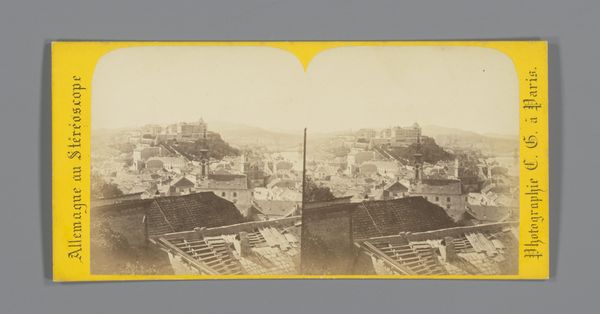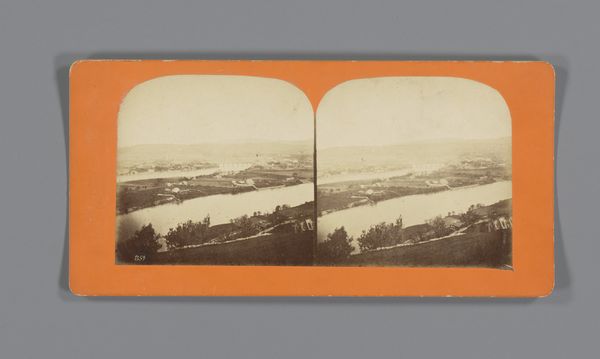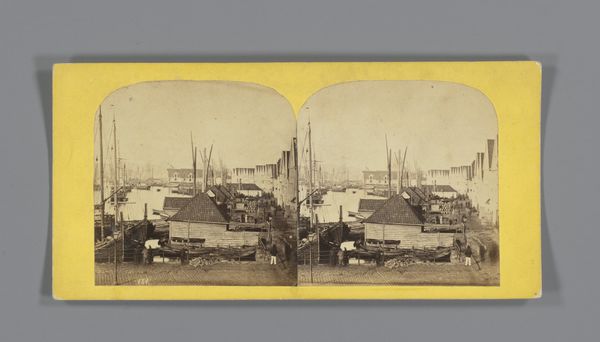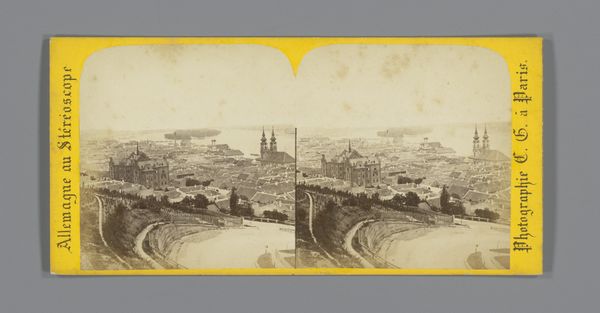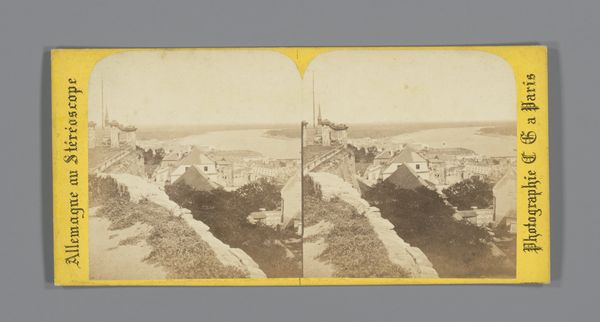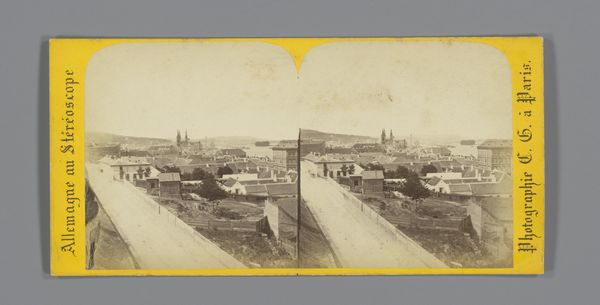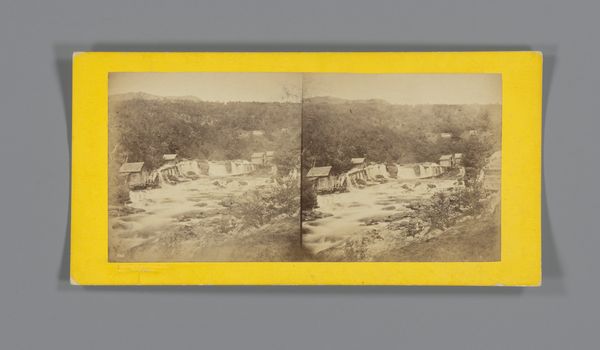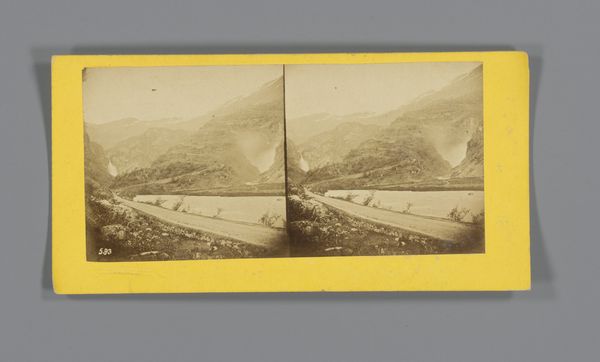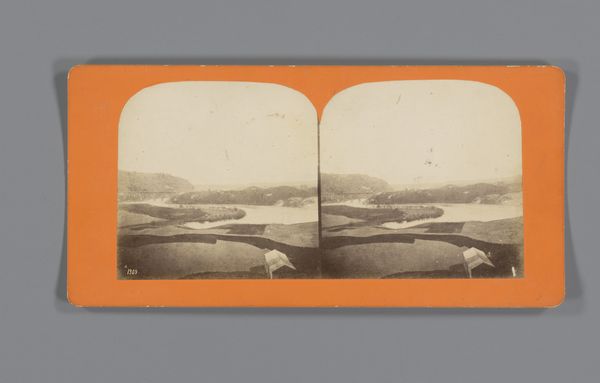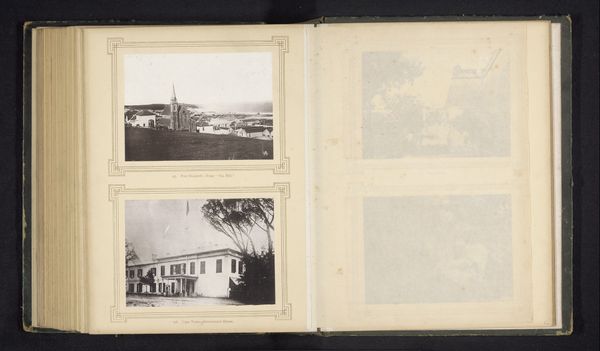
Dimensions: height 89 mm, width 177 mm
Copyright: Rijks Museum: Open Domain
Curator: Looking at this gelatin silver print from sometime between 1861 and 1870, we see Knud Knudsen's "View of Vossevangen in Norway". The stereoscopic presentation immediately strikes the eye. What is your first impression? Editor: Sepia tones create an ethereal, almost dreamlike impression. The strong horizontals draw your eye to the towering steeple, which dominates a cluster of modest, presumably vernacular structures nestled in the Norwegian landscape. Curator: Indeed. What draws me is Knudsen’s choice of medium. During this period, photography moved from niche craft to widespread documentation. Gelatin silver prints provided increased sensitivity and development speed over earlier photographic processes, enabling detailed landscape views like this one. This signals a democratization of image-making. Editor: I see what you mean; the texture almost blends painting and early photograph. If we consider this gelatin print, its formal components contribute to the sense of harmony. The vertical lines of the steeple and utility poles create contrast against horizontal fences. This visual interplay adds depth to the image and accentuates perspective, subtly highlighting a structured composition in what looks like an otherwise uncontrolled scene. Curator: But shouldn't we analyze who this image served and the intent behind it? Early photography played a huge role in how regions like Norway presented themselves to travelers, inviting further interest for consumption. This, of course, had a great impact on local inhabitants through shifts in economy and construction driven by that very consumption. Editor: Perhaps. Looking simply at the details of that steeple, it certainly lends an air of spiritual importance within the community’s formal arrangement. I appreciate how the building directs our eyes toward distant mountains—suggestive in their very presence as quiet, immovable guardians in an image built on contrasting planes. Curator: Overall, the print documents both changing technologies and the complex intersections between environment and labor within this locale during the 19th century. We are compelled to think about this serene image through a slightly disruptive perspective—prompted, as always, by careful artifice in its making and reception. Editor: Fair enough, a lasting, yet early picture shaped by contrasts of form, light, material, and those it framed.
Comments
No comments
Be the first to comment and join the conversation on the ultimate creative platform.
